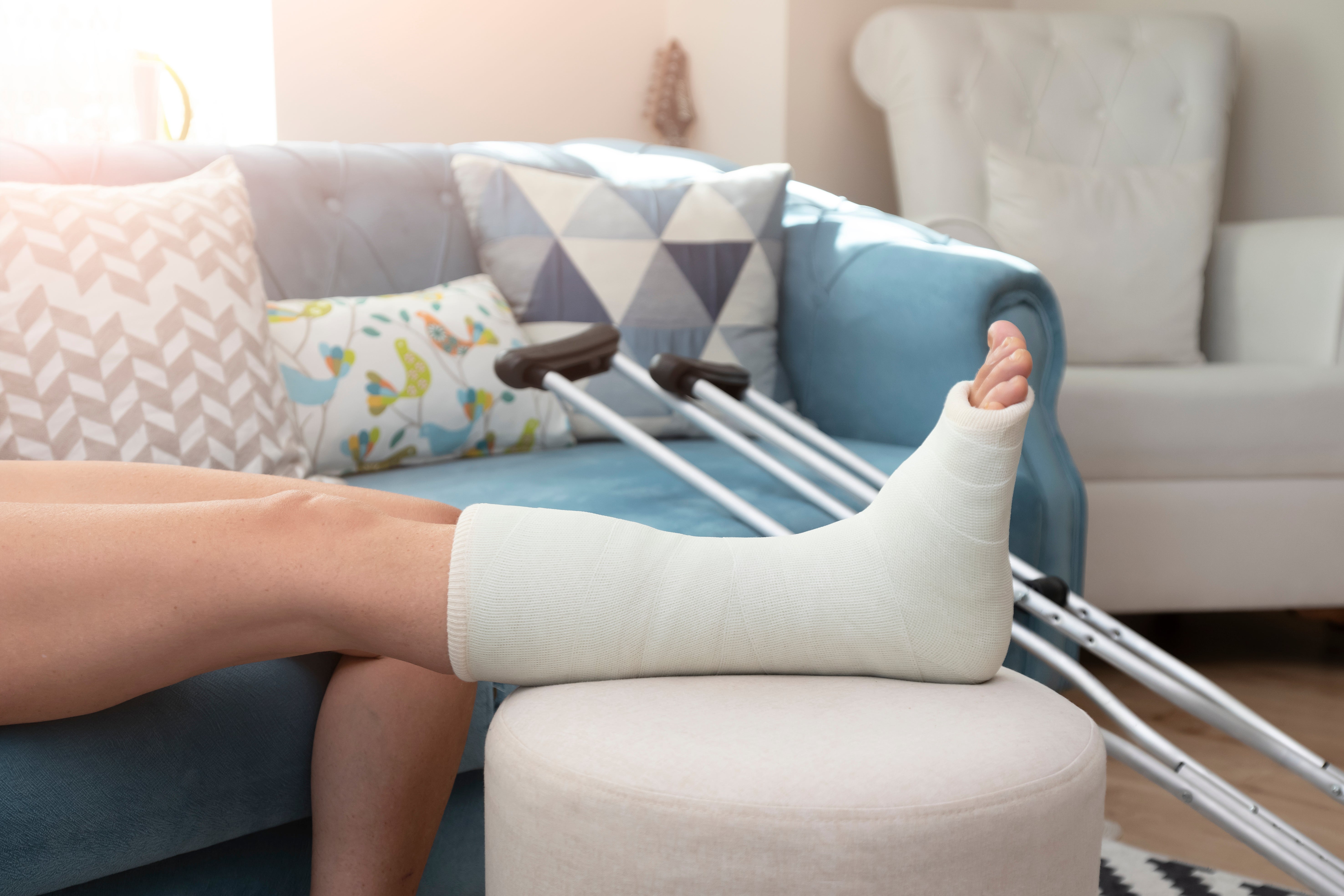Slate’s archives are full of fascinating stories. We’re republishing this article because it remains a reader favorite. It was originally published March 9, 2009.
Spanish authorities arrested a man wearing a cast of compressed cocaine at the Barcelona airport last Wednesday. The would-be trafficker had a genuine fracture of two bones below the knee; police are now investigating whether the injury was self-inflicted. What’s the safest way to break your own leg?
Immobilize your ankle and knee and use a heavy instrument with minimal surface area. It takes a surprising amount of pressure to break your shin. (In fact, the weight of an average American man would not be sufficient to fracture a leg, even if the mass were concentrated on a spot the size of a quarter.) To do the trick, you’ll first want to strap the leg to a fixed object—a cinderblock, maybe—below the knee and above the ankle. That will prevent your joints from buckling before the tibia breaks. Then you’ll want to choose the heaviest, smallest weapon with which you can reliably hit your target—a hammer would be more effective than a mallet, for example. The wound is likely to be quite unpleasant, so you might consider drugs to alleviate the pain. (Cocaine wouldn’t be a good choice, though—its analgesic effects are highly localized.)
According to news reports, the Chilean smuggler had an open fracture of the shin, meaning that the tibial shaft had cracked and broken through the skin. Open fractures in this area tend to be either spiral-shaped—caused by torsional forces such as twisting after falling from a great height—or transverse. The amount of force required to produce these injuries depends on a number of factors, including the location of the impact, the thickness of the soft tissue around the tibia, the condition of the bone, and the area across which the force is spread. As a rough estimate, it would take 218 pounds of pressure to produce a tibial fracture in a healthy adult using a hammer. You could decrease the force requirement by choosing a tool with less surface area, such as a hatchet—then again, you’d be increasing the risk of soft tissue damage and significant blood loss. In any case, it might be hard to generate that amount of force with your knee and ankle strapped down, so you may need the help of a friend.
There have been some reports of people breaking their own tibias without help. In 2008, an Australian kayaker who had become trapped in his boat by a fallen log leveraged his body weight (supported by the tremendous force of the current) to snap his tibia against the rim of the boat’s cockpit. The break enabled his trapped leg to collapse so he could escape the boat.
You may have heard stories about surgeons having to “re-break” bones that healed improperly after an initial fracture. Orthopedists don’t use blunt force to this end. Instead, they move the soft tissue aside and cut the bone using a very narrow power saw. In cases where complicated nerves or extensive vasculature border the cutting area, they will finish the cut with an osteotome, a kind of surgical chisel used to penetrate only a couple of millimeters. They would also use general anesthesia or a regional pain blocker with heavy sedation to dull the considerable pain.
Bonus Explainer: How do you compress cocaine into a cast? Dissolve it in liquid and pour the solution into a cast-shaped mold. The cocaine can then be recovered by chemical extraction with about 80 percent efficiency, depending on the process. Some news reports describe the cast as being “made entirely of compressed cocaine.” It would be possible to create a cast from relatively pure (greater than 90 percent) cocaine, but that would require the use of both a cast-shaped mold and a cast-shaped press.
Got a question about today’s news? Ask the Explainer.
Explainer thanks Robert Campbell of Mercy Medical Center and Stephen M. Pribut of George Washington University Medical School.
